June 3, 2025 | 18:59 GMT +7
June 3, 2025 | 18:59 GMT +7
Hotline: 0913.378.918
June 3, 2025 | 18:59 GMT +7
Hotline: 0913.378.918

A measurement tool is dropped into the Hau River to calculate the annual amount of mud and sand. Photo: Le Hoang Vu.
From October 28 to November 2, the inspection team of the project on sustainable sand management in the Mekong Delta and scientists will measure the amount of mud and sand flowing from the Mekong river into the Mekong Delta at eleven points on the Tien and Hau rivers. This is the Project "Mitigating impacts of climate change and prevent natural disasters by engaging the private and public sectors in the sustainable sand mining in Mekong Delta)" conducted by the World Wildlife Fund (WWF), the Vietnam Disaster Management Authority under the Ministry of Agriculture and Rural Development (MARD) and Mekong Delta provinces and cities.
The project aims to adress four issues including building sandbanks for the Mekong Delta, strengthening awareness of the public and policymakers involved on the impacts of unsustainable sand mining, improving the capabilities of partners in accessing the information on risks of unstainable sand mining; promoting research and development of alternative material sources of sand and gravels in the construction industry.

Technical staff study the amount of mud and sand poured into Hau and Tien rivers. Photo: Le Hoang Vu.
The first check revealed, the Mekong Delta is endangered by excessive sand mining, most notably by an increase in landslides. During 2018-2020, landslides in An Giang, Dong Thap, Can Tho, Vinh Long, and Ca Mau caused damages over VND 200 billion, resulting in an average loss of 500 hectares of land each year. Additionally, excessive sand mining deepens the river bed. Consequently, the depth of the Tien and Hau river bottoms grew by 1.5 meters between 1998 and 2008. During 2009-2016, the riverbeds of the Tien and Hau grew in depth by 5-10 meters, causing 66% of the Mekong Delta's shoreline to disintegrate.
Mr. Ha Huy Anh, Country Manager of the Sustainable Sand Management Project in the Mekong Delta, highlighted that survey data from the dry season of 2022 indicated that the quantity of sand recorded in Tan Chau - An Giang is a region with the largest amount of sand in the Mekong Delta. For regions with dunes at the river bottom, the average amount of sand carried over the river is around 30 m3/year/m. Thus, just a small quantity of sand is put in. Recent survey findings suggest that, from the Mekong River to the Hau River, there is predominantly fine, very fine sand mixed with organic mud, but in the Tien River, only sand has been reported since it is next to the Mekong mainstream.

Collecting sand samples at many locations on the Hau and Tien rivers is important data for the construction of a sandbank for the Mekong Delta. Photo: Le Hoang Vu.
Mr. Tran Tuan Anh, Researcher of the Center for River Diagnosis and Disaster Prevention (The Southern Institute of Water Resources Research) informed that through the survey during the last dry season of April 2022, the amount of sediment transported to the Mekong Delta in the dry season is very limited. Specifically, for river areas with dunes at the bottom, Tan Chau (An Giang) has the highest average of around 30m3 of sand per 1m of river width every year. The dunes at My Thuan (Vinh Long) were deemed unsuitable for the research in comparison to those in Can Tho (about 9m3/m/year) and Chau Doc (less than 4m3/m/year).
Even though sand mining in the Mekong Delta is now unsustainable, a quick halt of sand mining is not possible since river sand is vital to the region's economy for highway building, provincial roads, leveling for housing developments, industrial projects, etc. Therefore, the development of sandbanks is crucial in modern times. The sandbanks are the difference between the volume of river sand delivered from upstream and the volume of sand mined throughout the whole delta, as well as the volume of sand discharged into the Mekong Delta's oceans.
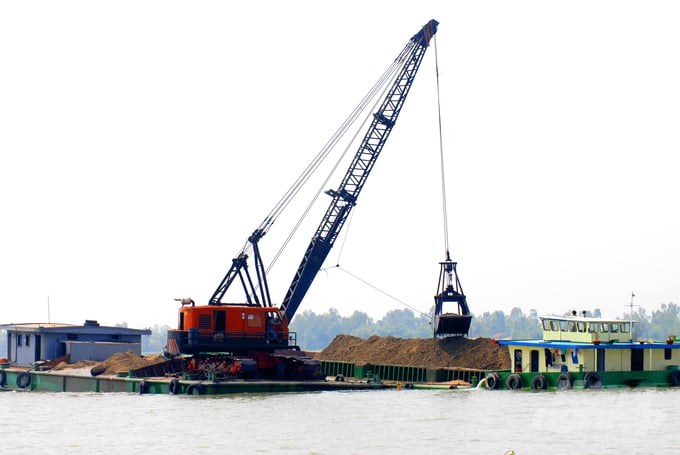
A sand mining site on the Hau River in An Giang. Photo: Le Hoang Vu.
According to Mr. Tran Tuan Anh, the development of substitutes for river sand is still in its early stage in Vietnam. Crushed sand (manufactured sand), which is sand crushed from limestone or granite, is the most popular substitute for river sand today. It is often used to create cast concrete or to construct hydroelectric dams. In addition, several enterprises in Ho Chi Minh City are already substituting plaster for sand when plastering walls or special foam for a considerable quantity of sand when concreting high-rise ceilings.
However, products to replace river sand have not been added to the list of eligible materials for state-funded projects, so investors must continue to rely on river sand. Moreover, the availability of materials to substitute river sand in the South in general, and the Mekong Delta, in particular, is very limited, necessitating the development of building technologies to minimize the quantity of sand required per unit floor area, as well as alternative materials.
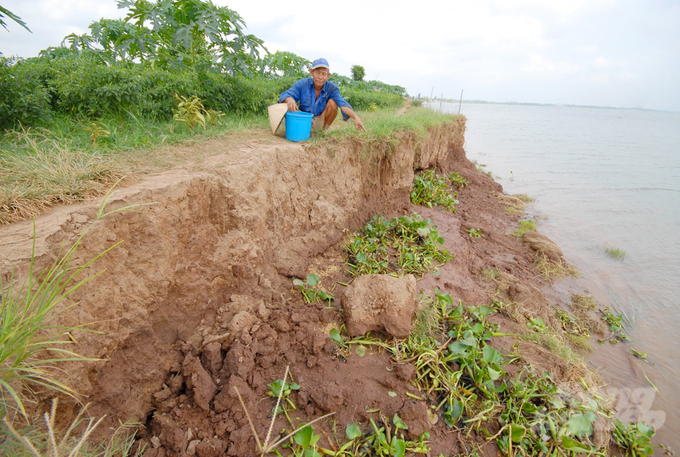
Currently, An Giang and Dong Thap are among the provinces with the highest total number of severe landslides in the Mekong Delta. Photo: Le Hoang Vu.
Thus, promoting research and development of materials to replace river sand requires both time and governmental assistance. WWF-Vietnam is collaborating with foreign specialists to research sustainable alternatives to river sand and will release the final report between late November and early December 2022.
Translated by Linh Linh
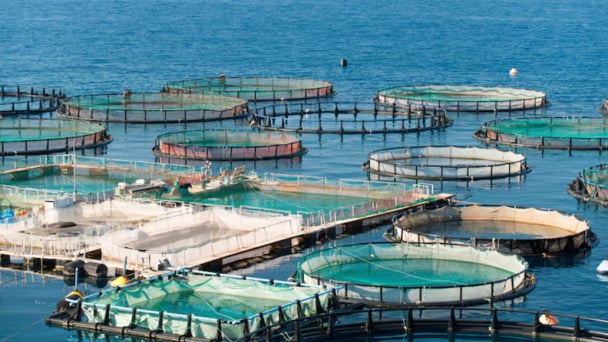
(VAN) Technology is redrawing the map of Vietnamese aquaculture: more modern, greener, and more sustainable.
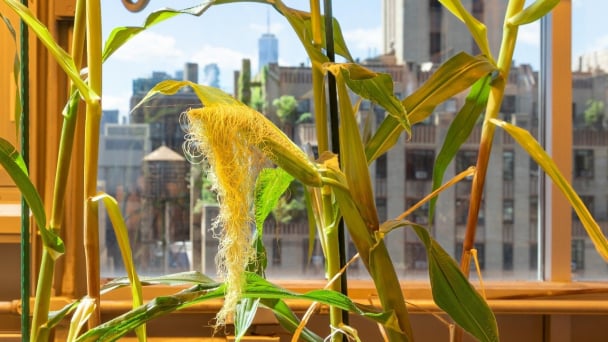
(VAN) Novel process harnesses machine learning to reveal groups of genes that determine how efficiently plants use nitrogen.
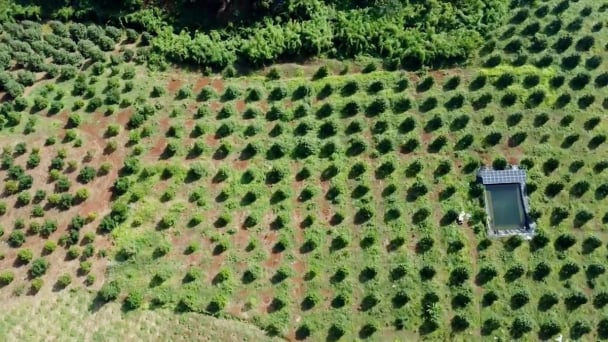
(VAN) Several scientists and farmers are experimenting with soil treatment in some key durian-growing regions such as Cai Lay (Tien Giang), Dak Song, Gia Nghia, and Dak R’lap (Dak Nong).
/2025/05/25/4127-3-073637_820.jpg)
(VAN) Thanks to the promotion from an FAO-implemented project, vegetable production in greenhouses in Moc Chau has seen strong development, from 1.5 hectares in 2021 to nearly 50 hectares in 2024.

(VAN) FAO has recently supported USD 140,000 to implement the project 'Risk mitigation human-animal interface risks through disease control initiatives in pig farming.'

(VAN) The People's Committee of Tra Vinh province has approved an adjustment to the investment policy for the Green Hydrogen Plant project, increasing its area to approximately 52.76 hectares.
![Reducing emissions from rice fields: [2] Farmers’ commitment to the soil](https://t.ex-cdn.com/nongnghiepmoitruong.vn/608w/files/news/2025/05/05/dsc08881jpg-nongnghiep-140632.jpg)
(VAN) Clean rice cultivation model in Thuong Tan commune, Bac Tan Uyen district, is assisting local residents in achieving sustainable agriculture by substantially reducing costs, increasing productivity, and protecting the environment.